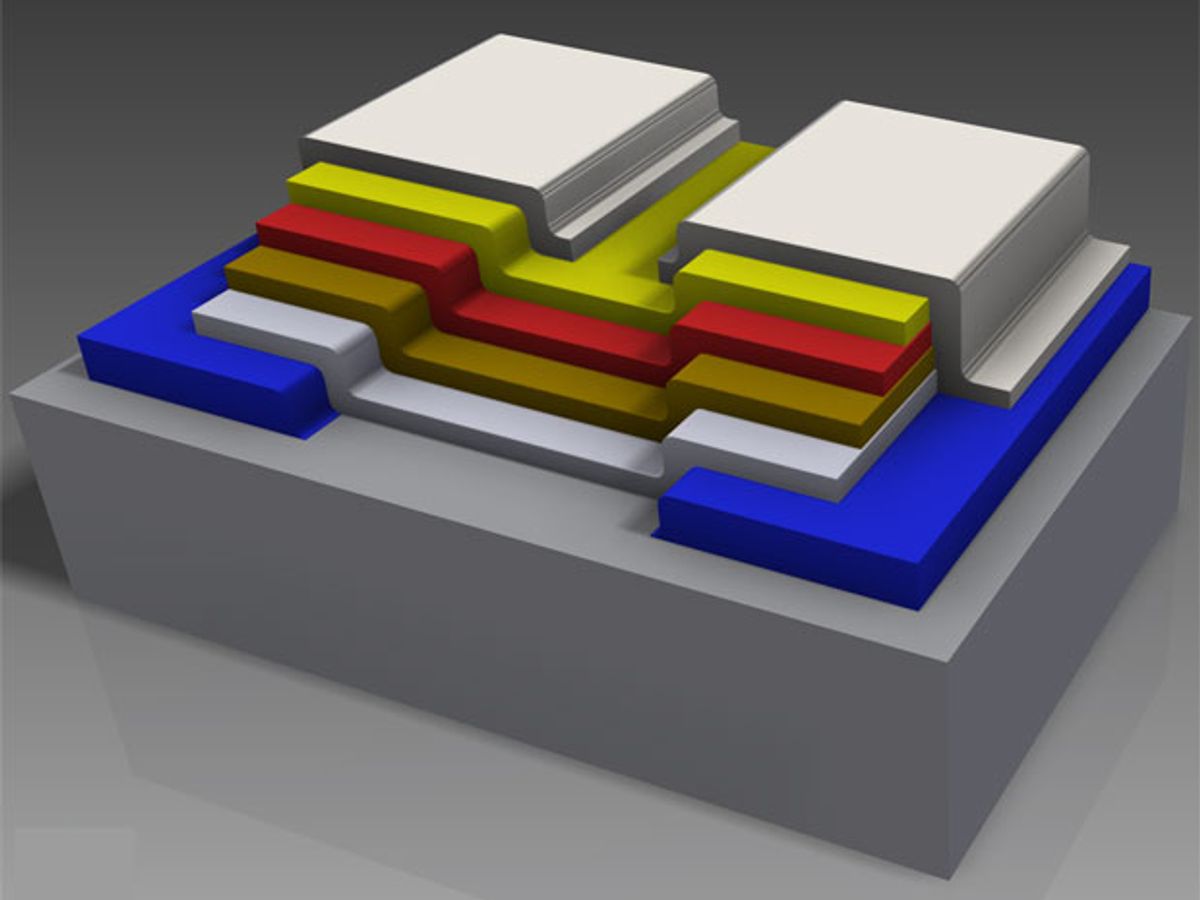Memristors, devices that contain conductors that 'remember' the current that has passed through them by changing their resistance, are being extensively investigated for potential application in memory cells.
The advantage of memristor memory is that it is nonvolatile, so it does not require continuous power to retain data, as DRAMs do. Also, memristors have proven to be a possible candidate for multistate memory cells, opening the way for their use in bionic brains. One drawback is that memristors’ repeatability, or the number of times a memristor state can be switched on and off, is limited.
A team of researchers at Bingöl University in Bingöl and Bilkent University in Ankara, both in Turkey, reported on 12 June in Applied Physics Letters that they’ve developed a 'flashristor,' a device that combines both the properties of a memristor and a flash-memory cell. Unlike existing devices, the memristor effect in their flashristor is not a local effect (such as a change on an atomic scale in crystalline structure), but a distributed effect in a larger area of the device, explains Aykutlu Dâna, one of the paper’s authors. “This way you can switch on and off with a high precision and repeatability,” he adds.
Dana's team, which has been researching flash memories for some time, realized that a field-effect transistor could behave like a memristor if instead of varying the voltage of the gate via an external terminal, you charge it with electrons that remain trapped by changing the drain voltage only. The apparent resistance of the channel (which connects the source with the drain) would then depend on the charge in this "floating gate."
This floating gate—called "storage layer" in the paper—needed to have three properties: 1) it had to be able to store electrons; 2) it had to be well insulated so that it retains the charge; and 3) there had to be a path that allows electrons to easily reach this layer. To create the flashristor device, they used a structure similar to that of a thin-film flash memory.
The channel consists of a zinc oxide layer connected to the source and drain via aluminum contacts. A 15-nanometer-thick hafnium oxide tunnel barrier allows the passage of electrons from the channel to the storage layer—a 5-nm-thick layer of silicon nitride. The storage layer is separated from the p-silicon substrate (which acts as a gate) by a control layer of aluminum oxide.
The device differs from a flash memory cell in that the source is connected to the p-silicon gate. When, for example, a negative 5-volt pulse is sent to the drain, the electric field causes electrons from the channel to pass through the tunneling layer and become trapped in the storage layer. When the pulse stops, the channel "sees" the charge in the storage layer, and its apparent resistance is changed into a different memristor state. The resistance of the channel can be read out with a 0.1-volt pulse; but this voltage is too low to affect the electron population in the storage layer. The flashristor can be reset by a positive 5-volt pulse, which gives the electrons in the storage layer sufficient energy to return to the channel through the tunnel barrier.
The researchers demonstrated four memristor states. But the uniformity and repeatability of the charge is better than a few percent, so it’s possible in principle to generate with 10 different states, explains Dâna.
Currently the write and erasing times are too long (about one second), admits Dana, who reiterates that the experiment was just a proof of principle.
Harika Manem, an electrical engineer at SUNY Polytechnic Institute’s Colleges of Nanoscale Science and Engineering, agrees that the device, which is CMOS compatible, needs to record memory states more quickly. “I liked that their analysis and modeling backed up their experimental results, but I don't think it is very applicable for neural circuits or other applications; you need much faster writing times,” she says.
Improvement should be possible, says Dâna. “We have some preliminary results that show an extremely high performance of graphene as a storage layer,” he says. “The conduction band of graphene sits right in the middle of the valence and conduction bands of the channel, and it can more efficiently capture the tunneling electrons from the channel, so it can be written in very short times. We have some initial devices that can be charged below a microsecond; this is better than conventional flash," says Dâna. But the road to practical applications might still be long. "Maybe if we come up with devices that can be operated with nanosecond write/read pulses, then industry will become interested,” concludes Dâna.



